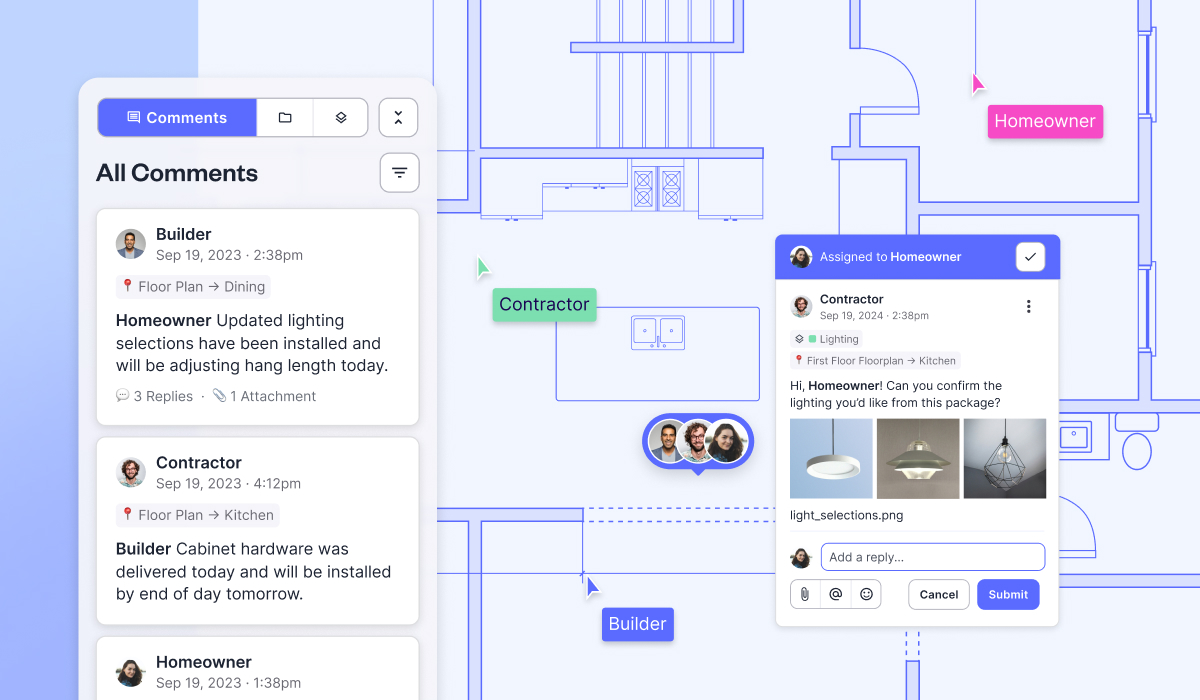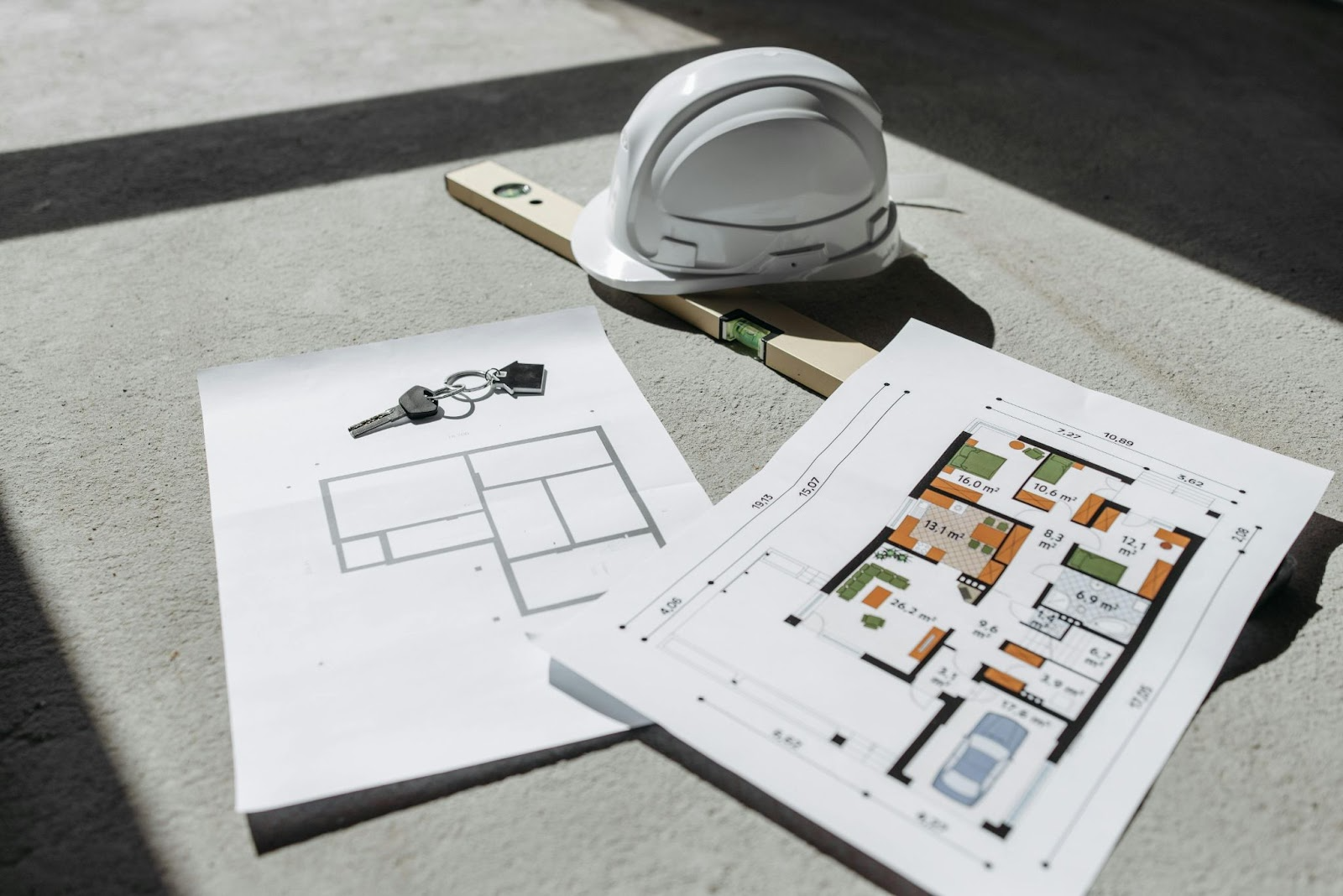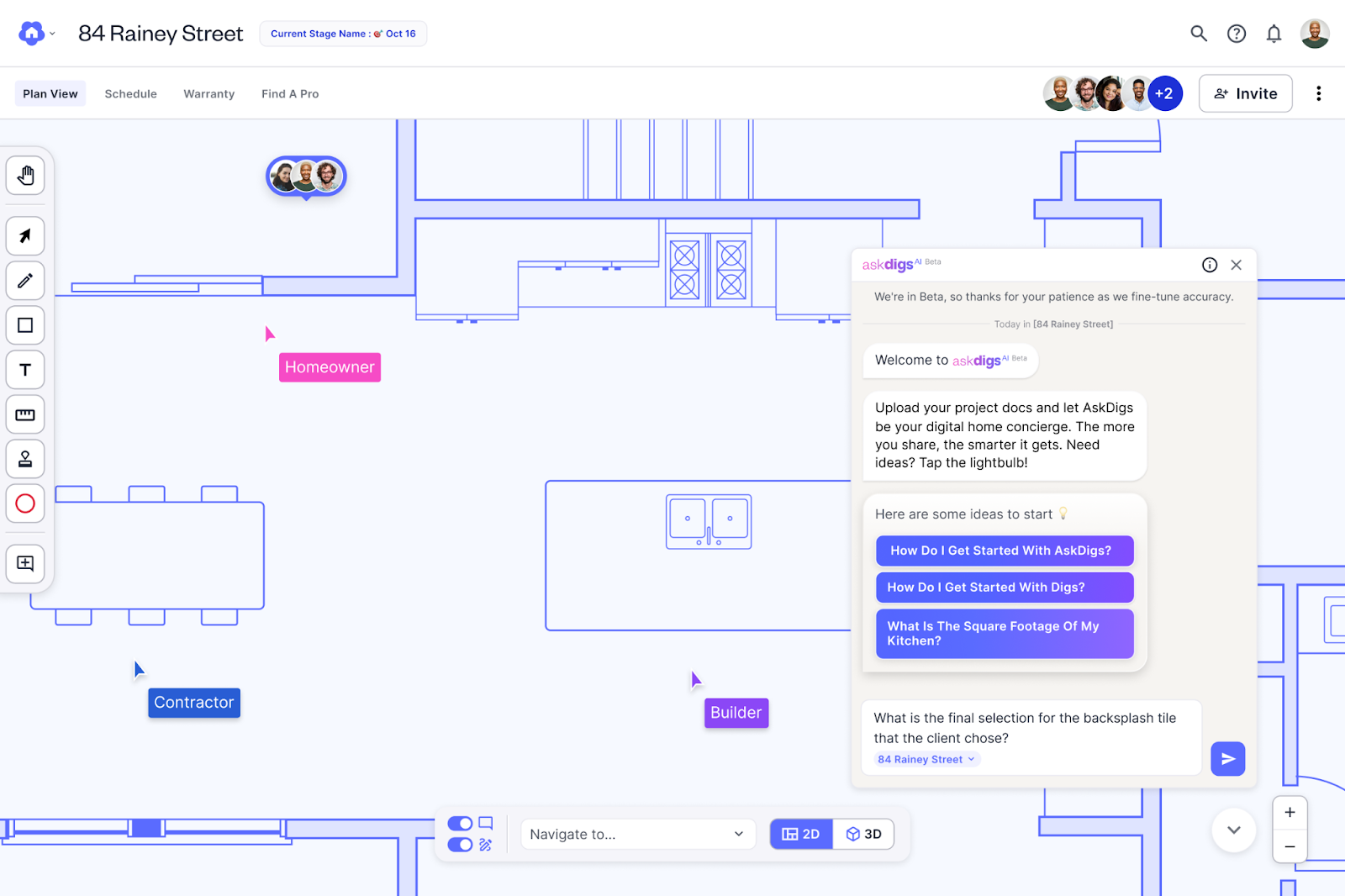If you ask most builders, contractors, or project managers where they lose the most time, the answer usually isn’t the actual building, it’s the endless cycle of tracking down answers, repeating conversations, and chasing updates. Miscommunication between teams is one of the biggest time drains in construction, and it often costs more than just hours. It leads to rework, blown budgets, and unnecessary stress.
The good news is that communication doesn’t have to be a bottleneck. By putting the right systems in place, you can save hours every single week while improving project outcomes and reducing frustration.
1. Centralize Information in One Place
When information is scattered across texts, emails, and random shared folders, someone always ends up wasting time searching for the latest version. A single source of truth solves this problem by ensuring that every team member, trade partner, and client works from the same information.
Pro Tip: Use Digs to Centralize Everything
Digs keeps all drawings, selections, approvals, and conversations in one place. No more hunting through email threads or calling five people to find the right document, everything lives where it belongs, with context.

2. Define Clear Communication Protocols
Not every conversation needs to be a meeting, and not every update should be buried in a long group text. Setting guidelines helps ensure communication is consistent and efficient. For example:
• Use daily or weekly huddles for critical updates
• Assign clear points of contact for each trade or team
• Agree on response expectations to keep things moving
This structure reduces back-and-forth, saves time, and keeps everyone aligned.

3. Keep Conversations Connected to the Work
One of the most common issues is when discussions live separately from the tasks or documents they relate to. For example, a decision about flooring might be buried in an email chain while the selection lives in a spreadsheet.
Pro Tip: Organize Conversations with Digs
In Digs, conversations stay linked to the selections, drawings, or tasks they’re about. That way, when someone opens a tile selection, they can see all related comments and decisions right there, no wasted time piecing things together.
4. Automate Where You Can
Many updates don’t need to be typed out manually. Automated notifications, reminders, and task updates save time and make sure nothing falls through the cracks. Automation isn’t about removing the human element, it’s about reducing the repetitive work so teams can focus on the build itself.
5. Embrace Transparency
Miscommunication often comes from hidden or incomplete information. When everyone has access to the same up-to-date details, there’s less second-guessing and fewer surprises. Transparency not only saves time but also builds trust between teams and with clients.
Pro Tip: Ask Digs AI
If you can’t find the information you need, Ask Digs AI can surface details about the build in seconds. Whether it’s a selection choice, an approval status, or a drawing update, you get answers instantly, saving hours every week across the team.

6. Review and Improve
Even with good systems in place, communication needs regular attention. Take time at the end of projects to ask your team what worked well and what caused delays. Continuous improvement ensures your processes save more time as your business grows.
Streamlined communication is one of the fastest ways to save hours every week in construction. By centralizing information, setting clear protocols, connecting conversations to the work, automating updates, and embracing transparency, you give your teams the tools to move faster and with less stress.
And with platforms like Digs, builders can make these practices simple and repeatable—turning communication from a constant headache into one of the biggest time-savers on every project.

